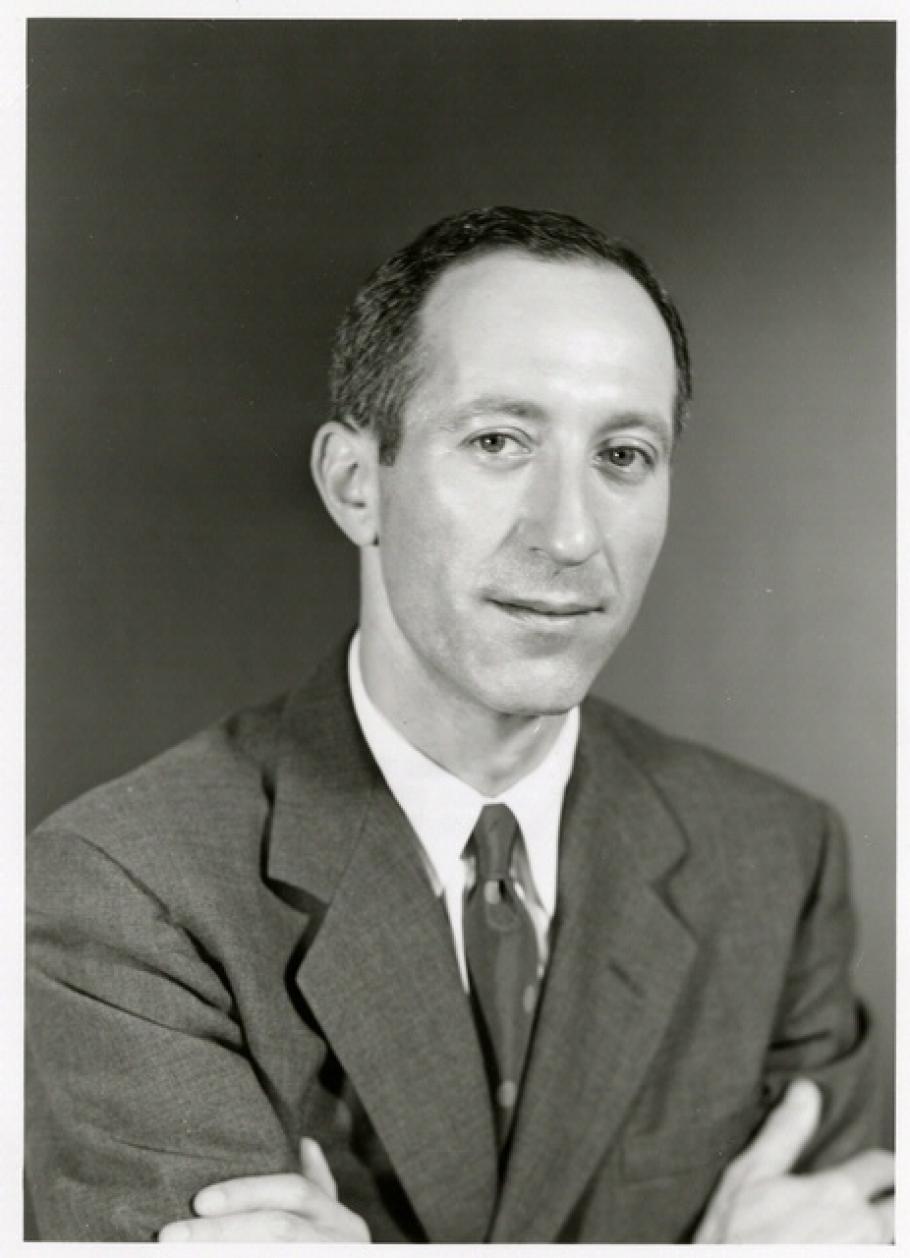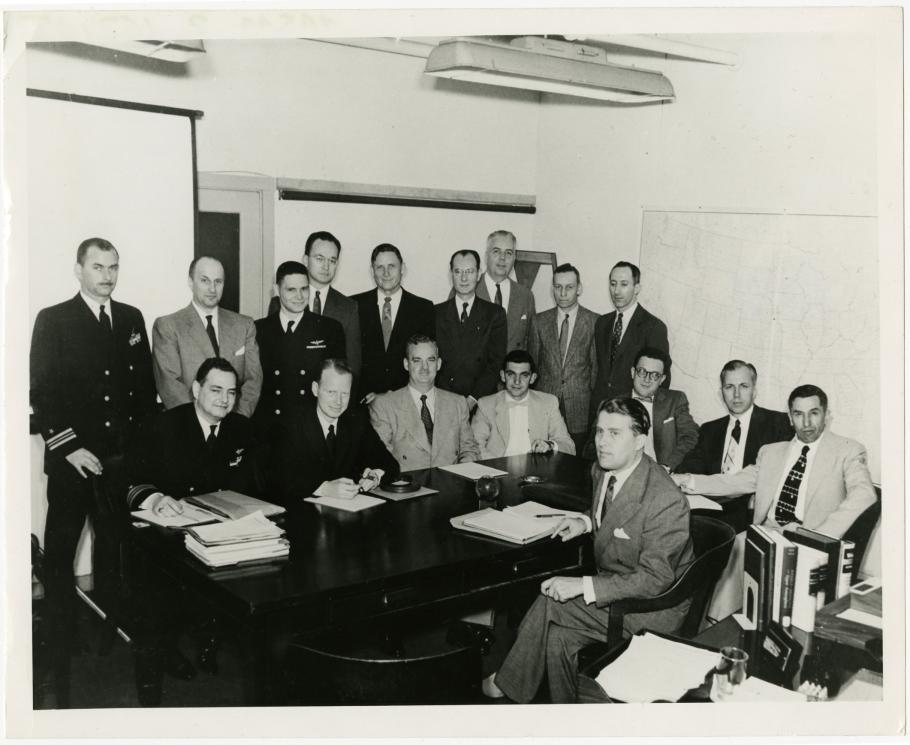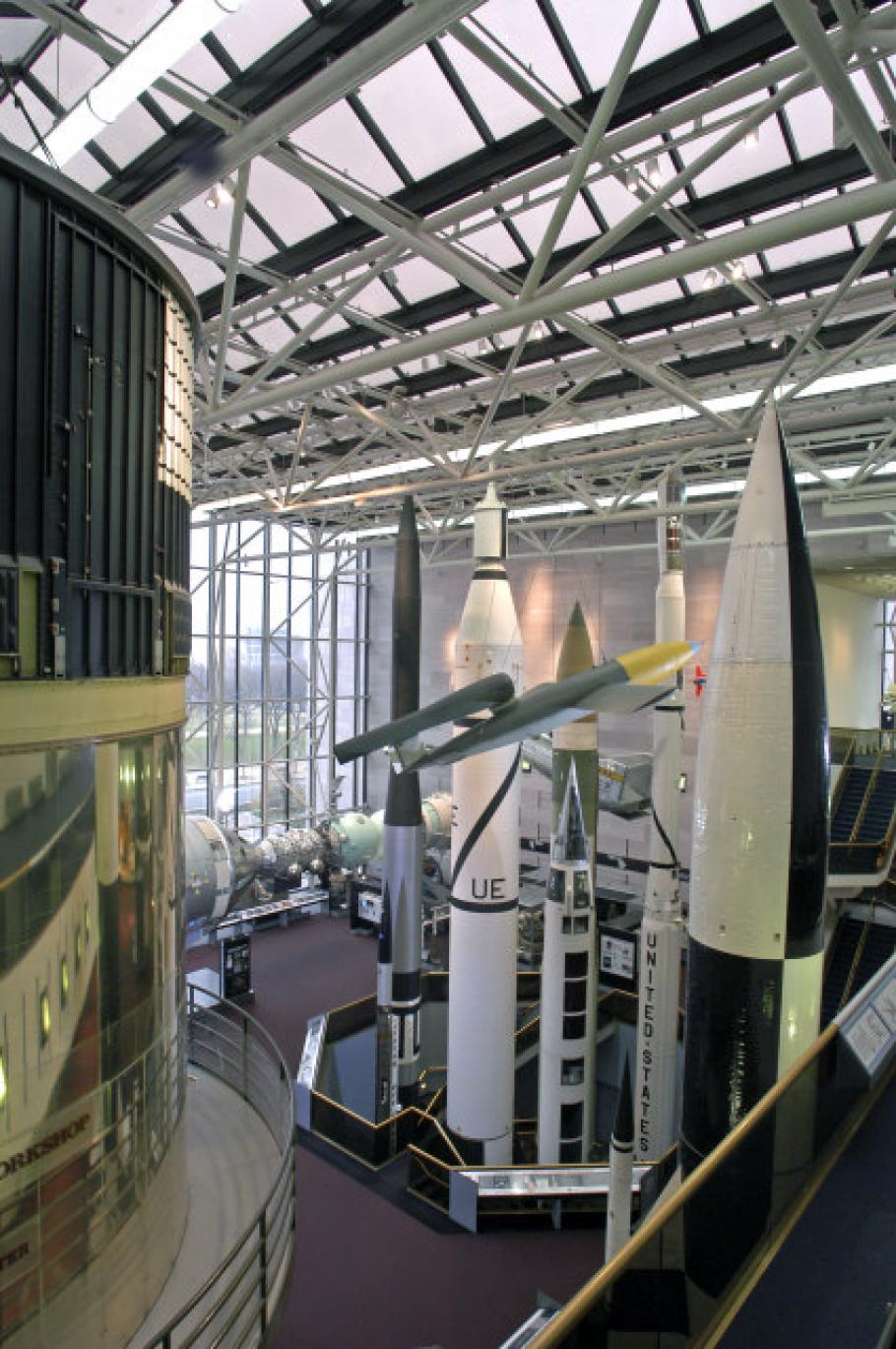Milton W. Rosen Pioneering Rocket Engineer 1915–2014
Rosen was a pioneer of American rocketry development. He helped put America in space as a leading figure in developing the Viking sound rocket and the Vanguard satellite launch vehicle.
Milton Rosen was a pioneer of American rocketry development. He helped put America in space as a leading figure in developing the Viking sounding rocket and the Vanguard satellite launch vehicle (both can be seen in the exhibition Space Race, Gallery 114, at the Museum in Washington, DC). In 1958, Vanguard I became the second American satellite of the Earth, and the fourth ever sent into space. Educated as an electrical engineer at the University of Pennsylvania, Rosen joined the Naval Research Laboratory (NRL) in Washington, D.C., in 1940. During World War II, he worked on missile guidance and control. Late in the war, the German V-2 ballistic missile demonstrated a revolutionary breakthrough in rocket technology. Rosen became an advocate for NRL exploring the upper atmosphere and near space with rockets. Supported by his boss, Ernst Krause, he went to the Army’s Jet Propulsion Laboratory in Pasadena, California, to get an apprenticeship in rocket development. He then led the Navy’s Viking project, which fired scientific payloads as high as 254 kilometers (158 miles) in the late 1940s and early 1950s.
In 1955, Project Orbiter team members meet to discuss a proposed U.S. spacecraft. Project Orbiter was an early competitor to Project Vanguard.
In 1955, Rosen proposed a satellite launcher based on an enlarged Viking. Surprisingly, he won a secret competition against an Army proposal headed by Wernher von Braun, who had once developed the V-2 for the Nazis. The Navy called its new project Vanguard, the first official U.S. satellite program, and Rosen became its technical director. After the Soviets launched Sputnik, von Braun’s project was revived, and it orbited the first American satellite, Explorer I. Vanguard suffered embarrassing launch failures, notably the catastrophic accident of the TV-3 in December 1957—the tiny satellite payload was dumped onto scrub land next to the launchpad (that object can also be seen in Space Race). But Rosen’s vehicle successfully inserted Vanguard I into orbit on March 17, 1958. It remains the oldest surviving manmade object in space. Project Vanguard later launched two more satellites.
In late 1958, Rosen transferred to the new NASA along with his NRL group. He went on to serve in senior administrative positions at the space agency and the National Academy of Sciences. He had a long, happy retirement and died at age 99 on December 30, 2014.


